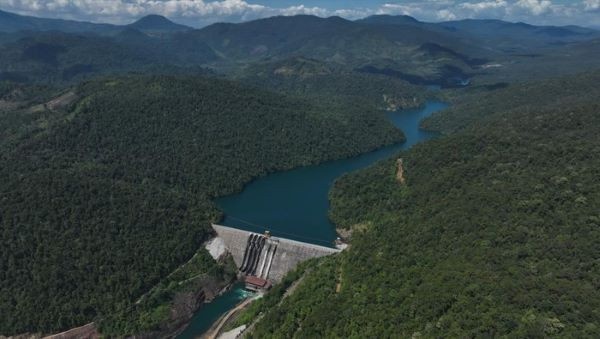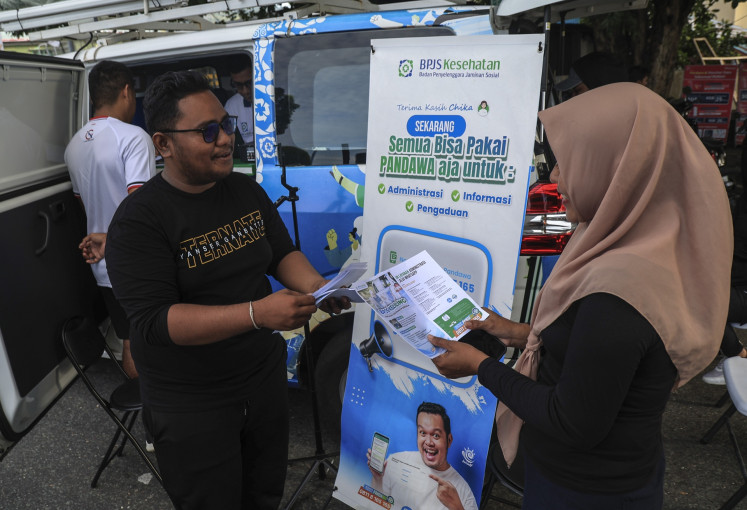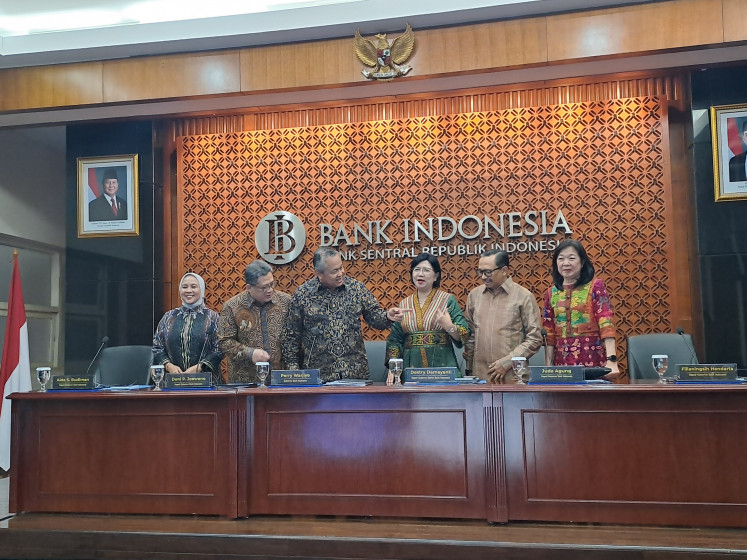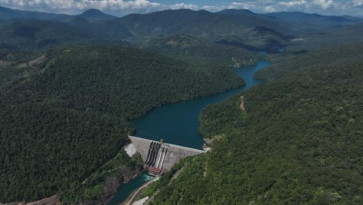Popular Reads
Top Results
Can't find what you're looking for?
View all search resultsPopular Reads
Top Results
Can't find what you're looking for?
View all search resultsGreen energy or eco threat? Indonesia’s hydropower dilemma
A hydropower project reportedly requires 16 types of permits, including a consent statement from residents and an environmental impact analysis (Amdal), notorious for taking years to issue.
Change text size
Gift Premium Articles
to Anyone
 Shared power: The forested highlands of South Sulawesi’s East Luwu regency tower over the Balambano hydropower plant in Wasuponda village on July 29, 2023. Built to support the operations of nickel producer PT Vale Indonesia, the power plant generates 110 megawatts, of which 10 MW are distributed to the surrounding community. (Antara/Jojon)
Shared power: The forested highlands of South Sulawesi’s East Luwu regency tower over the Balambano hydropower plant in Wasuponda village on July 29, 2023. Built to support the operations of nickel producer PT Vale Indonesia, the power plant generates 110 megawatts, of which 10 MW are distributed to the surrounding community. (Antara/Jojon)
H
ydropower, a key renewable energy source with a contentious nature, necessitates a mindful implementation to balance its benefits with potential societal and environmental disruptions. To achieve this, unpacking and understanding the intricacies is fundamental.
Hydropower is deemed ideal for baseload electricity generation by providing consistent and adjustable output, especially compared to other renewable energy sources. Solar, for example, has a highly intermittent nature and requires costly battery storage. Whereas geothermal comes with high initial costs and the risk of “hit and miss” due to technical challenges in drilling, so do other options of renewable energy with their list of challenges.
Indonesia’s hydroenergy potential was estimated at nearly 95 gigawatts (GW) by 2030. Given the 91.2 GW nationwide installed capacity of power plants in 2023, fully harnessing hydropower potential could transform Indonesia's energy landscape, potentially replacing all existing power plants with hydropower. By prioritizing hydropower, the Indonesian government seems to have its priorities on point.
In 2023, Indonesia marked a significant milestone with the groundbreaking of PLTA Mentarang Induk, the nation’s largest hydropower project with an over 1.3 GW capacity in North Kalimantan province. The project is an Indonesia-Malaysia joint venture. The government’s commitment is further demonstrated in Presidential Regulation No. 112/ 2022 guaranteeing government purchase and providing clear prices, albeit the attractiveness of the tariff has yet to be seen.
Additionally, PLN’s National Electricity Supply Business Plan (RUPTL) 2021-2030 outlines the expansion of renewable energy plants, totaling 20.9 GW, of which hydropower (PLTA) and mini hydropower plants (PLTM) dominate at 10.4 GW.
At the recent World Water Forum in Bali, the government emphasized hydropower as the most cost-effective and sustainable energy option, proving further its appetite. The cost-effectiveness of hydropower is also seen in its smaller levelized cost of energy (LCOE) when compared to biomass, solar and geothermal, as indicated by the International Energy Agency (IEA).
However, developing hydropower projects requires hefty capital expenses, approximately US$2 million per megawatt (MW), according to the Energy and Mineral Resources Ministry and the Danish Energy Agency in 2021. Fortunately, international support such as the Just Energy Transition Partnership (JETP) seems to favor hydropower.


















